Fishing Line Strength Chart
Skip To Save Time
The Anglers Gear’s ultimate fishing lines guide
There are many fishing lines on the market these days, and it can be tough to decide which one is right for you.
How do you know which one will work best for your needs with all of the different brands, weights, and materials available?
In this blog article, we’ll go through the types of fishing lines and assist you in determining which one is ideal for your next fishing excursion!
Types of fishing line – the big 3
There are three main types of fishing lines: monofilament, fluorocarbon, and braided.
Each one has its benefits and drawbacks that make it more or less suitable for different types of fishing.
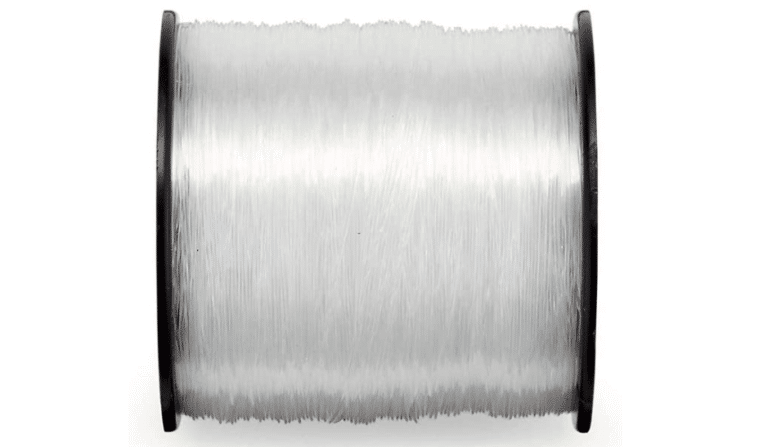
Monofilament fishing line
Monofilament (or Mono) is the most popular type of fishing line. It’s made from a single strand of material, usually nylon, and very affordable.
Mono lines are easy to see in the water and have good knot strength. They’re also relatively limp, which makes them suitable for baitcasting reels.
On the downside, monofilament stretches quite a bit, so it’s not the best choice if you’re targeting fish that can quickly swim away with your line.
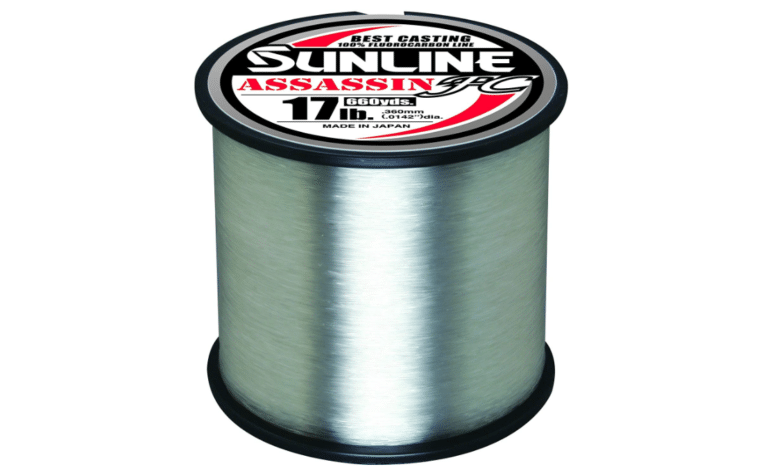
Fluorocarbon fishing line
Fluorocarbon is very similar to monofilament, but it’s made with a different material that gives it some distinct advantages.
Fluorocarbon is nearly invisible in water, so it’s ideal for spooky fish easily spooked by lines (like trout). It also has less stretch than mono, making it a good choice for fish that make sudden runs.
The trade-off is that fluorocarbon lines are more expensive and can be more challenging to work with. They’re also not as abrasion-resistant as other types of fishing lines.
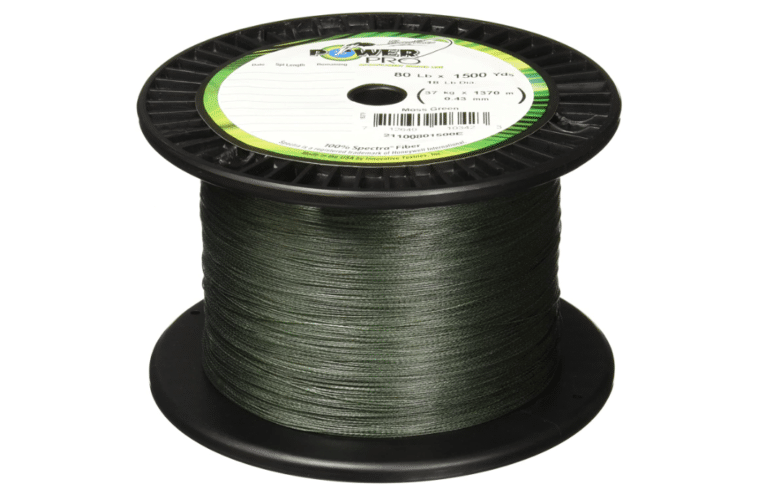
Braided fishing line
Braided fishing lines are made from multiple strands of material (usually Dyneema or Spectra). These lines are solid and have a minimal stretch.
A braided fishing line is an excellent choice for anglers targeting big fish that make long runs. It’s also ideal for use in saltwater, as it’s less likely to be affected by corrosion.
However, braided fishing lines can be challenging to manage and are more visible in the water than other lines.
Now that you know a bit about the different types of fishing lines let’s take a look at some of the factors you should consider when choosing one.
Factors to consider when choosing a fishing line
Fishing line material
As we mentioned before, most fishing lines are made from either nylon or fluorocarbon. Nylon is the most common monofilament line, while fluorocarbon is the most popular type of fluorocarbon line.
Fishing line weight
Fishing lines are available in a wide range of weights, from ultralight to heavy-duty. The weight you need will depend on the fish you’re targeting and the type of reel you’re using.
For example, if you’re using a baitcasting reel to target largemouth bass, you’ll need a heavier line than if you were using a spinning reel to catch trout.
Fishing line diameter
The diameter of your fishing line also matters. A thicker line will be more visible in the water and have more stretch, while a thinner line will be less visible and have less stretch.
The diameter you need will depend on the conditions you’re fishing. More transparent water requires a thinner line, while murky water can tolerate a thicker line.
Now that you know the basics of fishing lines, it’s time to start shopping for one right for you! Be sure to keep the factors we’ve discussed in mind as you decide.

Questions to ask when choosing a fishing line
1. What type of fishing do you plan to use the line for – fresh or salt water, bait or fly-fishing?
When choosing a fishing line, the first question you need to answer is what type of fishing you plan to use it for. Will you be using it in fresh or saltwater? And will you be bait or fly-fishing?
These are important distinctions because different types of fishing require other lines.
If you’re planning on bait fishing, for example, you’ll want a heavier and more durable line so that it can stand up to the weight of your bait and any fish that might take a nibble.
On the other hand, if you’re fly-fishing, you’ll want a lighter line that won’t weigh down your flies.
Saltwater fishing also requires a different line type than freshwater fishing because salt water is much more corrosive.
You’ll want a line that can stand up to the elements and won’t break down after just a few uses.
So, first things first: decide what type of fishing you’ll be doing and choose your line accordingly.
2. What size fish do you plan to catch?
Size Matters: Choosing the Right Fishing Line Diameter for Your Target Fish Species.
While the diameter of your fishing line may not seem like a big deal, it can make all the difference when you’re trying to land that trophy fish.
The general rule of thumb is that the bigger the fish, the thicker the line you’ll need. But there are other factors to consider, such as water clarity and bottom structure.
For example, if you’re targeting largemouth bass in murky water with heavy cover, you’ll want to use a thicker line so they won’t be able to see it and spook easily.
On the other hand, if you’re trout fishing in crystal-clear water over light vegetation, you may get away with using a thinner line. The key is to experiment and see what works best in each situation.
Here are some general guidelines for choosing the correct fishing line diameter for your needs:
– For panfish, such as bluegill and perch, use light tackle with lines ranging from 0.008″ to 0.012″ in diameter.
– For smallmouth and largemouth bass, use medium tackle with lines ranging from 0.013″ to 0.025″ in diameter.
– For walleye, pike, and muskie, use heavy tackle with lines ranging from 0.026″ to 0.055″ in diameter.
– For sailfish and tuna, Remember, the bigger the fish, the thicker the line you’ll need. But there are other factors to consider, such as water clarity and bottom structure.
The key is to experiment and see what works best in each situation.
3. What is the weight and length of your rod
The weight of your rod will determine the size and type of line you need. The heavier the rod, the thicker the line you’ll need.
A good rule of thumb is to use a line that’s about one-third as thick as your rod’s diameter. For example, if you have a three-quarter-inch diameter rod, you’ll need a one-quarter-inch diameter line.
The length of your rod also plays a role in choosing the right fishing line. If you have a short rod, you’ll need a thinner line so it doesn’t get tangled around the guides.
A longer rod can handle a thicker line without issue. Again, it’s all about finding that balance between what works for your particular setup.
4. How much line do you need on your reel?
Spooling a new line onto a reel can be tricky, so make sure you have enough line to cover the entire spool without having to wind too tightly.
The general rule is that you want about one and a half times the depth of the water you’re fishing in.
* For example, if you’re fishing in a river that’s 20 feet deep, you’ll need 30 feet of line on your reel.
* This will ensure that you have enough line to reach the bottom and still have some slack for when fish take off with your bait.
Knowing how much line to put on a reel is important, but it’s also crucial to know what type of line to use for different situations. In the next section, we’ll go over the different types of fishing lines and when to use them.
5. Are you looking for a durable line that can stand up to lots of wear and tear, or are you looking for a low-maintenance option?
There are two main types of fishing line: braided and monofilament. Braided line is made from multiple strands of material twisted together, while monofilament is a single strand of material.
Both have their advantages and disadvantages. Braided line is more durable and has less stretch, which can be helpful when you’re trying to set the hook or land a fish.
However, it’s also more expensive and can be more difficult to untangle if it gets tangled in your reel.
Monofilament line is cheaper and easier to use, but it doesn’t last as long as braided line and can stretch more, making it harder to feel bites.
So, which type of fishing line is right If you’re looking for a durable line that can stand up to lots of wear and tear, braided line is a good option.
* If you’re looking for an inexpensive and easy-to-use line, monofilament line is a good choice.
6. Consider the cost of different lines
some are more expensive than others but may be worth the investment if they last longer or perform better.
You also don’t want to be constantly replacing your line, so find one that is durable and can withstand the elements.
Top Fishing lines brands list
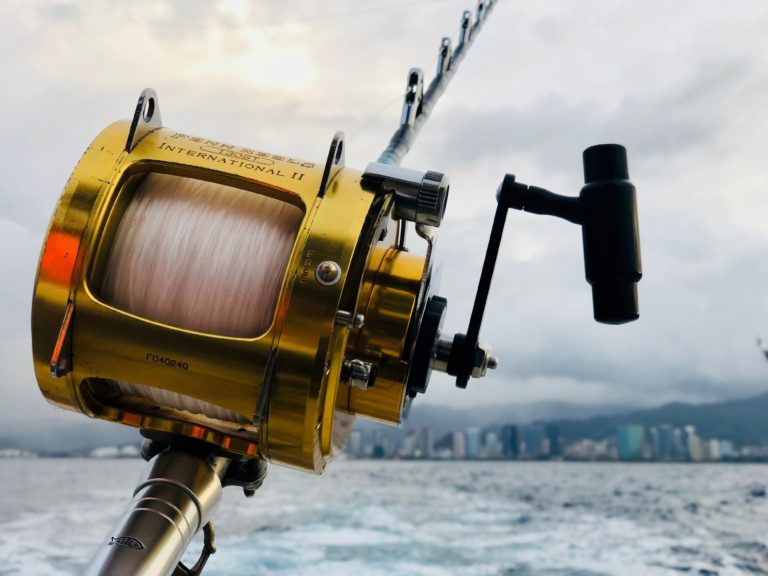
Whether you’re a seasoned angler or just getting started, it’s important to choose the right fishing line for your needs. In this section, we’ll take a look at some of the top fishing lines brands on the market today.
So, what are the best fishing lines brands? Here are our top picks:
Ande monofilament
Ande monofilament is a well known brand for their quality monofilaments. They create a variety of lines for different types
of fishing, so you can find the perfect line for your needs. Ande also offers
a wide range of colors to choose from, so you can find the perfect one to match your fishing gear.
Berkley
Berkley may be the top name on the list, – but that doesn’t mean their products are perfect for everyone.
In fact, Berkley’s lines may be better suited for experienced anglers who know exactly what they’re looking for in a line. If you’re just starting out, you might want to try another brand.
Power Pro
Power Pro is a very popular choice for fishing line, and for good reason. It is incredibly strong and durable, making it ideal for use in saltwater conditions.
It also has low stretch properties, which give you better sensitivity and hookset. Power Pro is available in a variety of colors, so you can choose the one that best suits your needs
KastKing
KastKing is another giant brand offers different types of fishing lines to meet the needs of every angler.
KastKing’s Copolymer Fishing Line is great for all types of fishing, from baitcasting to spinning. This line is made with a copolymer blend that makes it strong and abrasion-resistant.
Daiwa
Daiwa are known for their great gear. Daiwa makes some of the best fishing line in the world. Their lines are known forensitivity
-Abrasion resistance
-Knot strength
-Low stretch
All of these characteristics are important when choosing a fishing line. You want a line that is sensitive enough to feel the bite, but also strong enough to withstand the elements and fight fish.
Daiwa’s lines have all of these qualities and more, making them one of the best on the market. If you’re looking for a great fishing line, Daiwa is a great choice.
Sunline
We can’t keep Sunline out of our top brands because they make great products!
Sunline fluorocarbon is their most popular because it’s less visible in the water and has a higher abrasion resistance.
Sunline also offers a huge variety of sizes and breaking strengths so that you can find the perfect one for you.
Anglers gear's braided line top choice

If we have to choose a single braided line, than it has to be the one from Power pro. The braided lines from this manufacturer are top notch, and they’re definitely worth their price tag.
The company’s products boast incredible strength, zero stretch,and a thin diameter that results in long casts and increased sensitivity.
In addition, Power Pro’s braided lines are available in a variety of colors, making it easy to find the perfect match for your fishing conditions.
If you’re looking for an all-around great braided line, then we highly recommend checking out Power Pro. You won’t be disappointed!
Anglers gear's Fluorocarbon line top choice
When looking for Fluorocarbon line we are voting for Sunline.
This company’s Fluorocarbon is very strong, and has excellent knot strength.
In addition, Sunline’s Fluorocarbon is virtually invisible underwater, making it a great choice for fishing in clear water conditions.
It is also available in a variety of colors and sizes, so you can find the perfect line for your needs.
We highly recommend giving Sunline’s Fluorocarbon a try the next time you’re looking for a new fishing line. You won’t be disappointed!
Anglers gear's Monofilament line top choice
Last but not list, the most popular and recommended monofilament line is from Berkley.
This manufacturer’s monofilament line is strong and durable, yet still remains surprisingly affordable.
It is also available in a variety of colors and sizes, so you can find the perfect line for your needs.
Whether you’re a beginner or a seasoned pro, we highly recommend giving Berkley’s monofilament line a try. You won’t be disappointed!
We hope this guide has helped you better understand the different types of fishing lines available, and how to choose the right one for your needs. Good luck out there, and happy fishing! until next time! XOXO Anglers gear.com team:)!!!!”””
If you need more information, check our fishing line strength chart
Line Strength Chart – Anglers Gear’s Guide
A fishing line is an important piece of equipment for any angler. Different lines have different strengths, and it is important to choose the right one for the type of fishing you are doing. This chart will help you choose the right line for your needs.
What fishing line to choose depends mainly on the fishing area, fishing style, and fishing equipment.
Fishing Lines Types
On buying a fishing line, pay attention to its type. In general, there are 3 types of lines: monofilament lines (mono), aided lines (braided), and fluorocarbon lines (fluoro). Each line is good for different purposes.
- Monofilament lines or mono for short, are made of a single thread called the core. The core is covered with a special coating. Mono is very cheap and easy to find.
- Braided fishing lines are made of a number of threads (about three to four). They are covered with a special coating, too. Braided fishing lines have better strength than mono lines. Thanks to the coating, they are very abrasion-resistant.
- Fluorocarbon lines, which are different from monofilament and braided lines, have better quality than them. As the name implies, fluorocarbon lines are covered with a special fluorocarbon coating. They are not sensitive to ultraviolet light, which means they can stay in water for many years.
Monofilament Strength Chart
| Pros | Cons | When |
| Cheep and easy to use, very buoyant | Short lasting and weeker compared to other | Top water fishing |
| Diameter mm | Line Test Lb |
| 0.27 | 10 |
| 0.4 | 20 |
| 0.5 | 30 |
| 1 | 100 |
| 1.4 | 200 |
| 2.2 | 500 |
| 3.7 | 1000 |
Braided Strength Chart
| Pros | Cons | When |
| Extrimly strong | Hard to tie and expensive | Law visibilty water, or when in need of a long line |
| Diameter mm | Line Test Lb |
| 0.2 | 10 |
| 0.23 | 20 |
| 0.28 | 30 |
| 0.33 | 40 |
| 0.5 | 80 |
| 0.55 | 100 |
| 0.84 | 200 |
Fluorocarbon Strength Chart
| Pros | Cons | When |
| Invisible and last much longer from other lines | Knots tend to fail, expensive | Clear water. or as a leader. |
| Diameter mm | Line Test Lb |
| 0.28 | 10 |
| 0.41 | 20 |
| 0.5 | 30 |
| 0.68 | 50 |
| 1.02 | 100 |
Fishing Line Chart for Bass
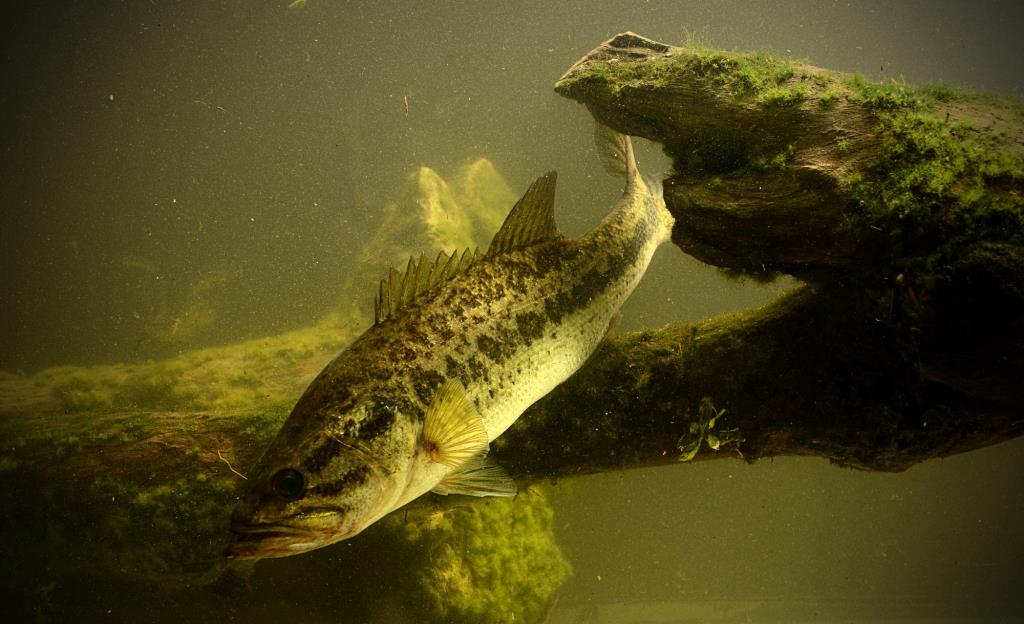
Use 8 to 12-pound test monofilament or fluorocarbon line with finesse presentations for bass fishing. In heavy cover, bump it up to a 15 or 20-pound line test.
A braided mainline in the 30-50 pound test range is incredibly adaptable when casting big swimbaits, crankbaits, jigs, and topwater tackle.
Line Chart for Trout
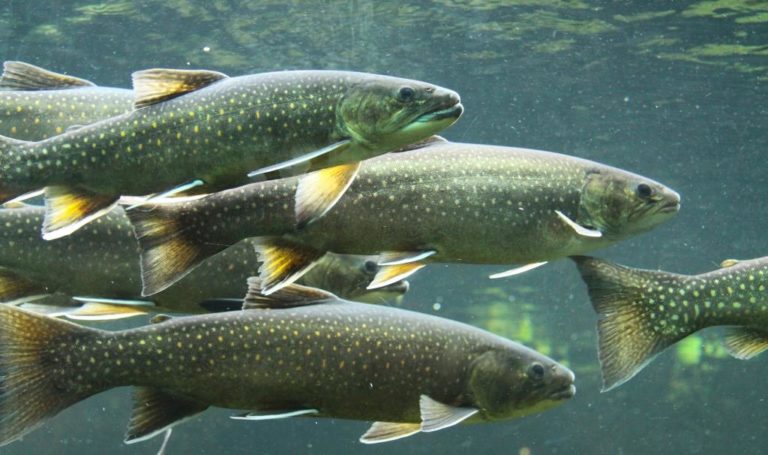
A 4-pound test monofilament or fluorocarbon line is best for still fishing with bait or casting spinners and spoons. When trolling, use a 10-pound test monofilament or braid with a 6 to 8-pound test fluorocarbon leader.
Because trout are frequently lineless, most anglers choose the invisibility of fluorocarbon over durability.
Fishing Line Chart for Catfish
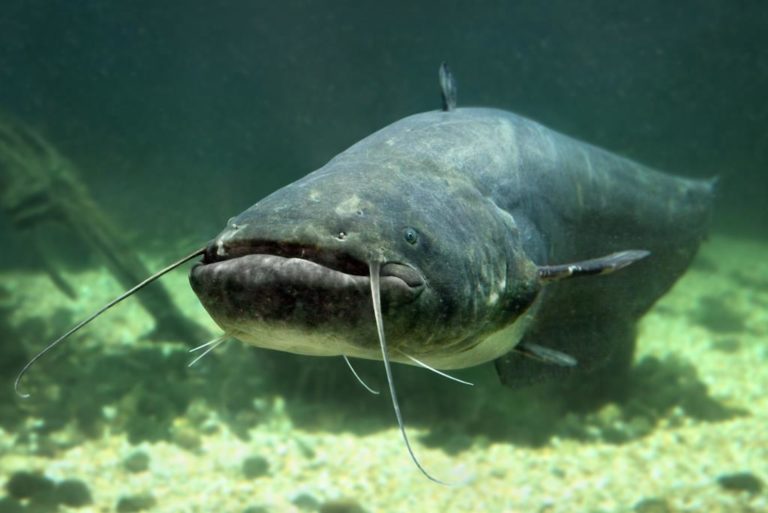
Catfish aren’t afraid of lines, so light or heavy line can be used as needed.
For general use, high-strength, small-diameter monofilaments with a strength rating of 15 to 25 pounds are excellent options.
When hunting the big ones, you may want to upgrade to 30-, 40-, or even 80-pound.
Line Strength Chart for Salmon
For salmon you should use a rod with a medium to heavy action and a 15-30 pound braid or 10-15 lb mono line. You may attach a lighter fluorocarbon 2-4 foot long leader.
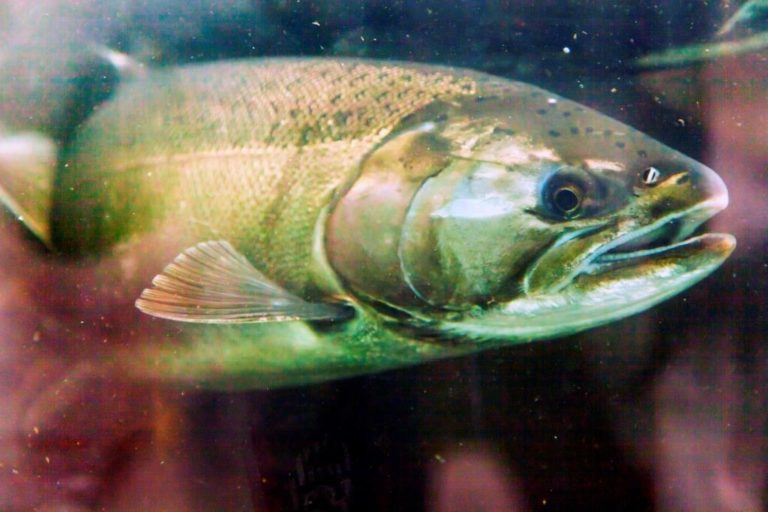
Some FAQ’s:
What size fish can 30lb braid catch?
30lb braid designed for big game fishes like Tuna, Marlin, Shark, and other large sea fish. While it is designed for catching large game fish, 30lb braid is commonly used for medium-sized game fish as well. For example, the largest recorded striped bass caught with a 30lb test line was 49 pounds. However, most striped basses are under 30 pounds. 30lb braid is also often used for catching large catfish.
How much weight can fishing line handle?
Fishing line is measured by its test, which indicates how much weight it can handle before breaking. The higher the test number the stronger the line. Bass fishing typically uses a monofilament leader of braided to 24lb test, which means that this type of fishing line could support up to 24 pounds before breaking under normal usage.
What is the strongest type of fishing line?
The short answer is braided line. Having said that, there are many different types of fishing lines on the market. Some of these lines are made out of synthetic fibers, while others are made from natural fibers. Of all the fishing line that is available to consumers, Dyneema® fiber is considered to be the strongest type. The manufacturer of dyneema fiber describes it as “ultra-high molecular weight polyethylene fiber” (Dyneema).
The lines are extremely thin, but extremely strong. For example, dyneema fishing line can hold up to 453 pounds without breaking (Smithsonian Institution). This makes it perfect for all types of heavy duty fishing applications. It is also gentle on the environment because it is made from a material that can be recycled. However, you will pay more for this fishing line than other lines on the market because it is of such high quality. This is not to say that there are not good and affordable natural and synthetic alternatives (Smithsonian Institution).
How to test line strength?
Line strength is usually measured in pounds or kilograms. Every fishing line has its own minimum breaking point, which is the lowest it can hold before snapping.
If you don’t know the strength of the line you have, simply tie it to your rod and hang a weight at the end. Shake it like it would shake when a fish is hooked and Increase the weight you are lifting until the line finally breaks. The true strength per pound of your line is the heaviest weight you can lift without breaking the line.
If you know the fish you’re after you can browse our hooks size chart to find the species you’re after
If you need to understand the actual size by mm or inches check our Fishing hook size chart in mm.
If you’re looking for a Circle hook size chart we also got one.





